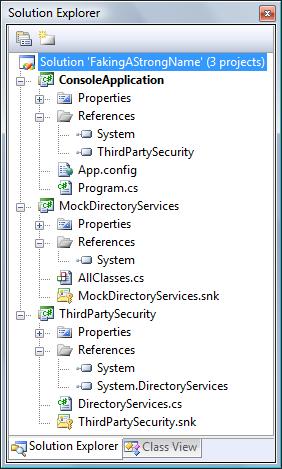Introduction
Once upon a time a strong name was just that - strong. If you'd referenced an assembly with a strong name within your application you could be sure that that's the assembly you were going to get a run-time. Well, even that was never true. An assembly re-direct could cause you to be delivered a different version but it would always have to have the same name and public key token, and hence must have originated from the same source. They key thing is that no-one could slip your application a fake assembly and pass it off as the real thing.
Well, it turns out that now they can. You simply place your fake assembly in the GAC folder within which the real version of the assembly would logically reside. The name of the folder is used to establish its version and public key token. Don't believe me? Read on...
Scenario
The scenario is based upon a situation I encountered a few years ago. ThirdPartySecurity contains a class called DirectoryServices which is essentially a wrapper around System.DirectoryServices - it allows the caller to easily performs some look-ups against Active Directory ('who are the members of this group', that kind of thing). ConsoleApplication has a reference to ThirdPartySecurity and simply acts as a test harness. MockDirectoryServices is exactly that - a mocked-up implementation of System.DirectoryServices. It is not referenced by anything.







